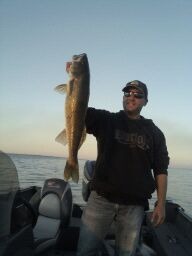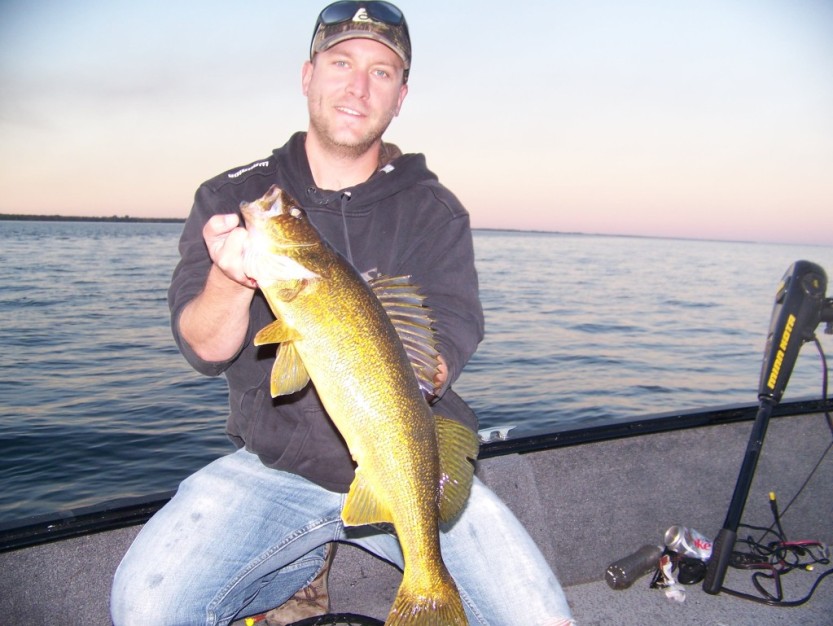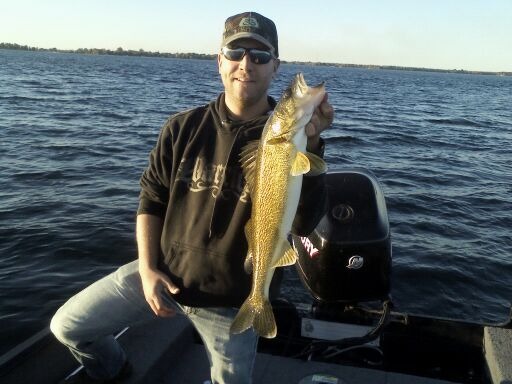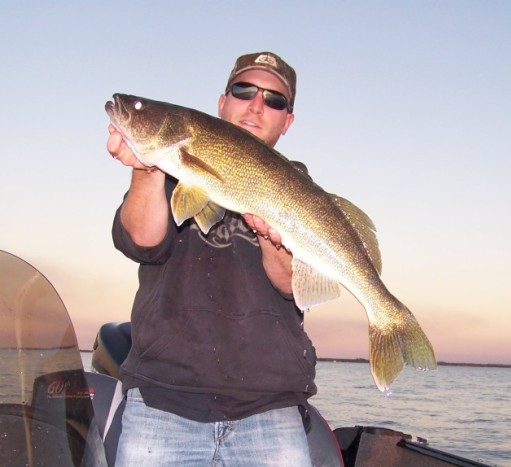As any fisherman or outdoor enthusiast knows, weather can define a fishing day, weekend or trip. Weather is fickle. It can be beautiful one moment and brutal the next. It can be heavenly, spontaneous, unpredictable or downright cruel. As Mark Twain wrote if you don’t like the weather, just wait a few minutes. The contrast in conditions between last weekend and this Thanksgiving weekend certainly gives his words true meaning.
Last week a friend of mine sent me a last minute invite and despite the pelting rain, 20-30K East wind and cold I felt a little onset of cabin fever and decided to accept the offer. I threw on my rain-gear over thermal underwear and a warm hoodie and made my way to our meeting spot at the ramp. We found areas to fish in tucked in behind the shelter of islands (fishing the open water would have been downright dangerous) and did very well all things considered. However after a few hours of constant rain, wind, waves and frozen fingers I was definitely happy to head home to a warm shower. I suppose there is a sense of satisfaction to be gained from battling it out in fierce conditions, but I’d trade it in for 26C and sunny any day of the week.
Fast forward to this past Thanksgiving weekend and you would think you travelled in time back to July. Donning shorts and t-shirts, we were now looking at relatively calm waters and a warm breeze. I jokingly asked my guests if they’d rather fish or water-ski. It was absolute heaven. The only hints revealing the true time of year were the short days, colourful foliage and flocks of geese. Now, let’s not confuse things here. Nice weather doesn’t necessarily mean good fishing; far from it. However, there are times when the stars align; when you do get to have your cake and eat it too and when you do get the best of both worlds. Two of my guests found this out over the weekend with their personal best walleyes and steady action amidst a setting fit for the gods.
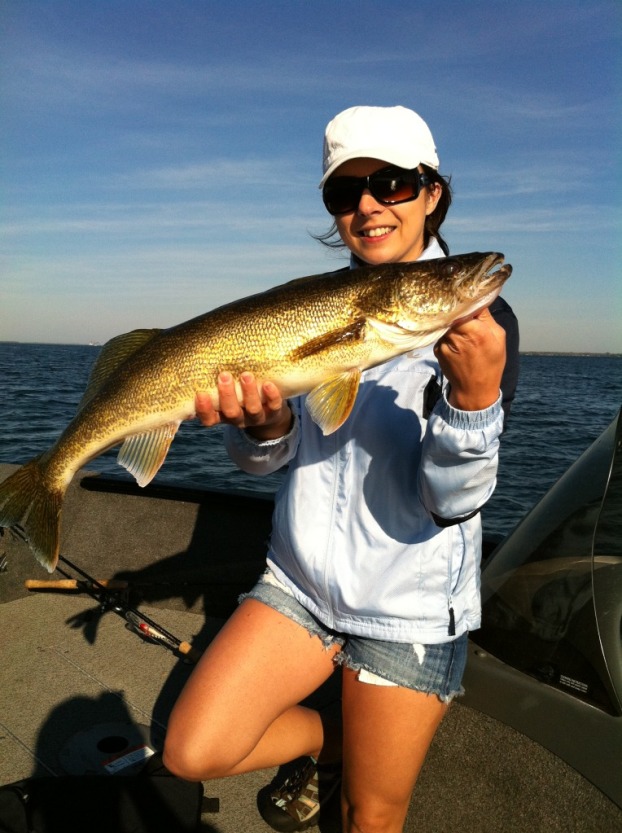
I’ve been off the water for a few weeks with a bad back so I started working areas that produced fish for me last time I was out, which was about 3 weeks ago. My eagerness dissipated when I realized spots that produced so well mere days ago were bone dry. I had some catching up to do. I spent the first few hours of the weekend searching for fish. Walleyes are a strange bunch (not sure what that says bout walleye fishermen), one minute you can’t keep your lure away from them and they seem to be everywhere you expect them to be. The next, it’s like you’re fishing the Dead Sea. Staying on the fish requires a lot of time and persistence and if you’re a weekend angler like me, this can get tricky. Even though it can be discouraging when the fishless hours pile up you have to keep going. Walleyes can’t just leave the lake. They are always somewhere and they have to eat at some point. After fishing 2-3 spots without as much as a hint of a fish, I stopped, looked around and asked myself what had changed since the last time I was out.
I figured the most dramatic difference was water temperature. In the spring, the shallow bays, creeks and small rivers warm first. In the fall, the reverse process occurs. When the longer, cooler nights prevail in late September going into October the water starts to cool off in the shallows and the deeper basin maintains warmer temperatures longer. Water takes more time than air to change temps, and the more of it you have, the longer it will take to cool down or warm up. Picture your typical creek or large shallow bay or small river mouth for example. These areas are usually good congregating places for baitfish and in turn predators in the spring because they warm faster. In the fall, the opposite happens. The weeds die off, the water in the shallows cools faster than the main lake, so logically the fish move deeper. This doesn’t mean you won’t find fish shallow, but you are more likely to find schools of fish in or near deeper water. Find good structure nearby where they can come up and feed are you’re likely closing in on walters. Another way to picture this phenomenon is to imagine a shallow bowl filled with warm water. If you put it in the freezer the water in the middle stays warmer longer as the edges cool off and freeze up first. If you take the same bowl, fill it with ice cold water and put it in the oven the deeper water in the middle will remain cold longer and the water on the edges will warm faster. The same thing happens in every lake, every year, but obviously on a much smaller scale.
This doesn’t mean you can only find fish in deep water, but it does mean fish tend to school up in areas where deep water is readily accessible. As soon as I started focusing on structure adjacent to deep water the fishing picked up in a big way. The first spot I checked out, basically a large deep basin with a rock pile topping at 25 feet in the middle of it, I immediately found walleyes. They were schooled up very tightly around the edges and they were on the feed. Once I scattered the fish on that rock pile I looked at my map and tried to find other spots that offered the same type of characteristics (deep water and nearby structure). I started getting fish on every spot I tried all at about the same depth. Once this happened, it became a matter of fine tuning the right presentation and enjoying the action. I had the blueprint for a pattern.
Now that we’d found the fish, it was time to worry about the business end of things. The key to getting fish to bite this time of year is to slow it down. Whether you opt for a horizontal or vertical presentation you can’t be moving slow enough. I remember reading about a “do nothing” jigging technique in a magazine a while back. The author used 3†tubes on ¼oz jigs in the fall for bass and literally let his jig sit there on the bottom and waited for the fish to bite; kind of like fishing with live bait. I’ve had great success using this technique for bass in the past and I now know it works with my Percidaed friends too. Basically you need to treat your jig like it’s a live worm or minnow. This is what I tell my guests. The “do nothing†technique is really easy for anyone to master. As long as you feel contact with the bottom the rest is simple. You do nothing. I use the current and my trolling motor to ensure my line remains as vertical as possible and stay on top of the fish. Choose a jig that allows you to maintain bottom contact and work the area very slowly. If you have a transom mount sonar it’s a huge help. I have a sonar unit mounted in the front of my boat specifically for jig fishing and I couldn’t do without it. By the way, don’t worry about using jigs up to 1/2 or 3/4 even 1oz if the conditions dictate a need for it. Walleyes will suck ’em up like candy despite the fact that they look heavy enough to be used as anchors.
When people ask me what time of year I like best my answer is quick and easy; fall. As cottagers slowly but surely store away their boats, the air cools and the leaves change, fall consistently provides some of the year’s most memorable moments at the lake. Not only are the fish putting on a feed for the winter, but the air is invigorating, the colours breathtaking and the overall experience well worth the effort. The weather isn’t always in the record breaking range we had this weekend, but with the right clothing you can always be comfortable. Many people reject the idea of a weekend at the lake after the first few strong frosts and that means quieter times in a beautiful setting for those of us who don’t. So invite your friends and family and head out to the lake this fall. Make sure you bring plenty of firewood, warm clothes, a camera and more importantly your sense of adventure. I promise you won’t be disappointed. Oh and don’t forget to wet a line, you may even be rewarded with a personal best walleye.
Until next time…Stay outside.
Jigger.
